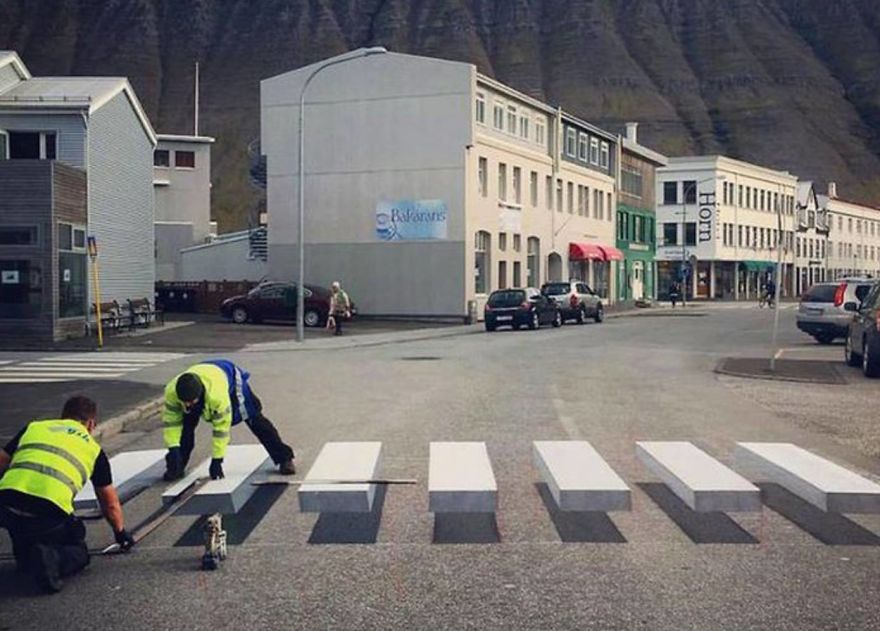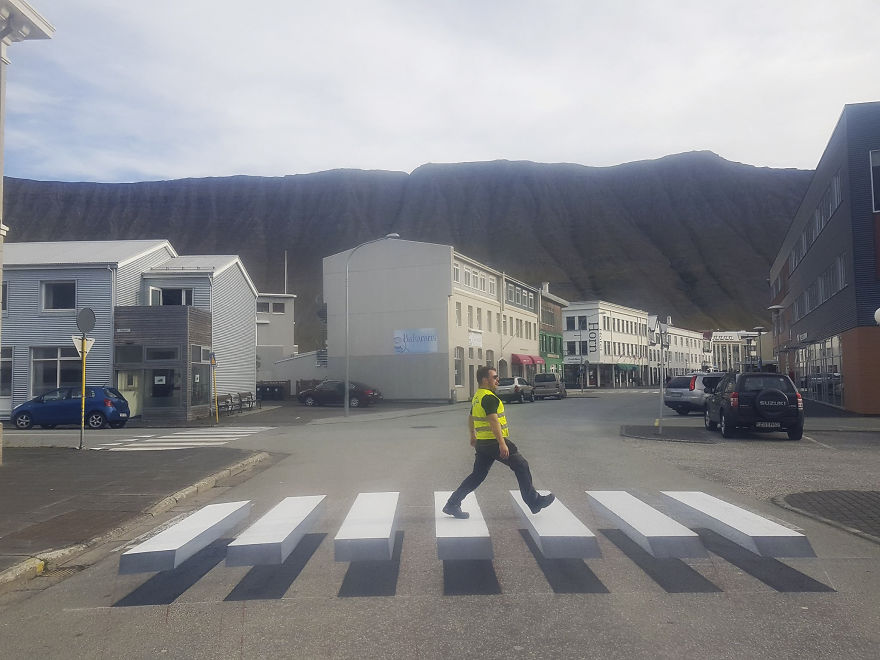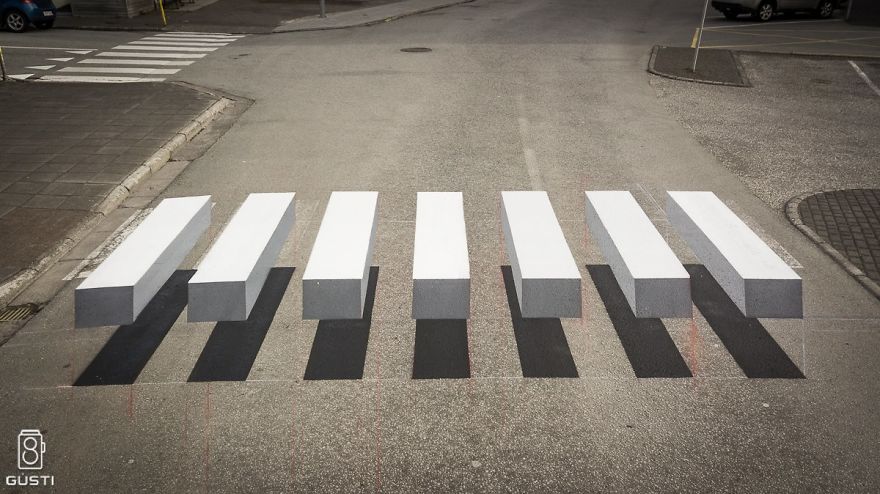Crossing the road, which should be such an elementary procedure, has opened-up so many automotive cans of worms that it makes you wonder if ‘Darth Vader’s’ Green Cross Code had any merit at all (David Prowse, the original tall actor employed in the ‘Darth Vader’ role for the Star Wars movie franchise, was also the man featured in the much-promoted Green Cross Code TV adverts).

The Belisha-beaconed zebra crossings of yesteryear, which were originally more Swedish in their blue and yellow striped colour scheme, are said to have been ‘invented’ by former PM, James Callaghan, around 1948. Three years later, the more familiar black and white Panda colouring became commonplace. While children of a certain era will recall the ‘Tufty Club’ road crossing drill, later revised to become The Green Cross Code, the problematic aspects related to crossing incidents remain unresolved, even with automatic traffic signals being employed.
A recent Icelandic experiment has seen a cleverly 3D-painted illusion being used on its pedestrian crossings. It is an optical illusion, which might pose additional issues to the pedestrian over-indulging in non-prescription unguents, or boozy excess. However, it also gives the pedestrian the impression of walking ‘on air’, while making the road-user fear that he might be approaching a row of concrete blocks. Naturally, it works in daylight but there is no word on its effectiveness at night-time.

Another well-publicised exercise took place on the streets of the Dutch town of Drachten. All road signs, lighting and road markings were removed from its streets. The result was that, without a posted speed restriction, drivers slowed to a steadier rate of progress and, amazingly, the former quite high accident rate dropped to zero. On some housing estate roads, children’s play areas were even created in the centre of the roadways.
This latter road safety programme has been adopted by other towns in both the Netherlands and Germany, with local mayors reporting significant reductions in road traffic incidents and, most importantly, zero fatalities. Interestingly, congestion levels have reduced and air pollution tests, which Germany in particular is very keen to conduct, have shown that both noxious and CO2 emissions have plummeted. Rather than creating complexity for drivers, the lack of road signs and street furniture has proved to be less confusing.

If you have driven through Spain in recent times, you may have noticed that the country does not use many speed detectors in towns and villages, through which main roads run. Instead, a detecting device reads your vehicle’s speed and, if it exceeds the posted restriction, a red traffic light within 100m is timed to make you stop for around two minutes. Of course, all of the vehicles behind can see that you are the cause of the hold-up, which increases the potential shame and embarrassment levels. This simple method of ‘self-policing’ pays innumerable benefits.